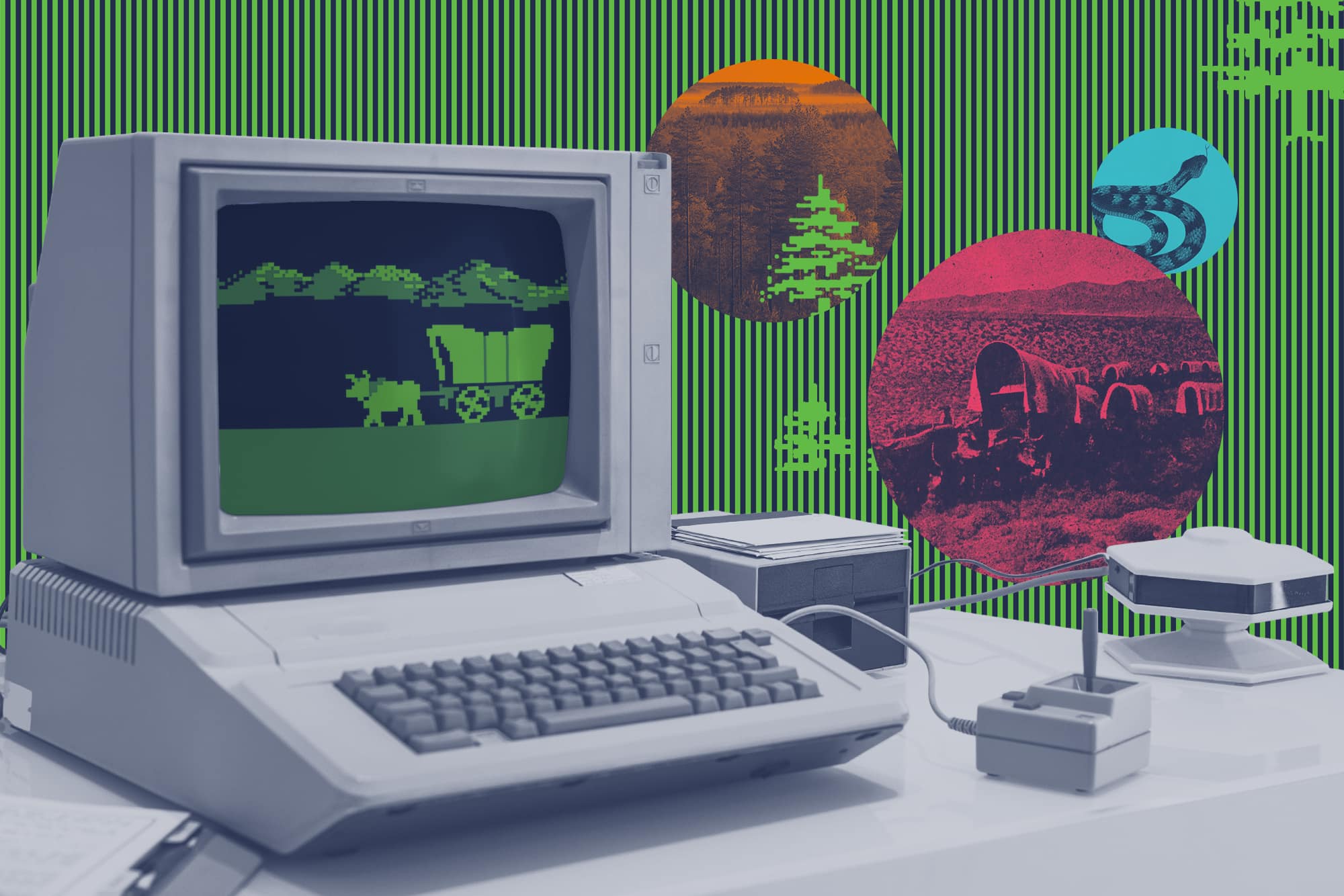When Kevin Driscoll was a kid, he loved playing The Oregon Trail in his school’s computer lab with friends. Driscoll enjoyed the novelty of playing a video game while at school – and the fact that everyone could play together.
In the game – designed to teach children about the realities of 19th-century pioneer life on the Oregon Trail – players assume the role of wagon leaders who must guide a group of settlers. Along the way, they need to purchase supplies, hunt for food and make myriad choices.
The game ends when the player reaches Oregon, or if they die along the trail; death can occur as a result of such things as disease, starvation, lack of clothing in cold weather, snakebites and hunting accidents.
“Every kid in class had an opinion on the best strategy to use,” Driscoll, now an assistant professor of media studies at the University of Virginia, said. “I remember kids crowing about the right number of oxen to buy before heading out. And everyone could laugh at a joke about dying of dysentery. In my world, no other game was as universal as The Oregon Trail.”
As it pertained to gaming, the 1980s era that Driscoll grew up in would prove to be a transformative time.
Driscoll said the hype over personal computers was “overwhelming,” with thousands of suburban public schools purchasing PCs such as the Apple IIe and the IBM PCjr. The result was a raft of “educational software” – much of which was not created by educators at all, according to Driscoll.

Media studies assistant professor Kevin Driscoll says software like The Oregon Trail is an important part of our cultural heritage. (Photo by Dan Addison, University Communications)
“Despite the name, personal computers were still very expensive and difficult to use,” Driscoll said. “So, while the educational benefits of classroom computers were often overstated, they did create opportunities for teachers and students to get hands-on access to technology that would have otherwise been out of reach.”
This is what led Driscoll to using The Oregon Trail – which recently celebrated its 50th anniversary – as an activity in two of his UVA courses.
In “Comparative Histories of the Internet” – the basis for Driscoll’s new book, “The Modem World,” that comes out April 19 – students learn about the role of K-12 students and teachers in the development of personal computing.
UVA Today caught up with Driscoll to learn more.
Q. Why did you choose to use The Oregon Trail in your Comparative Histories of the Internet course? How did you feel it tied in?
A. The goal of the class is to examine different ways of telling the history of the internet. The Oregon Trail gives us an opportunity to learn about the contributions of educators, parents and kids. Before class, we read a piece by historian Joy Lisi Rankin about the pioneering use of time-sharing computers by universities and K-12 schools during the 1960s and 1970s. In many cases, the users of early educational networks developed techniques that would only appear many years later on commercial services.










